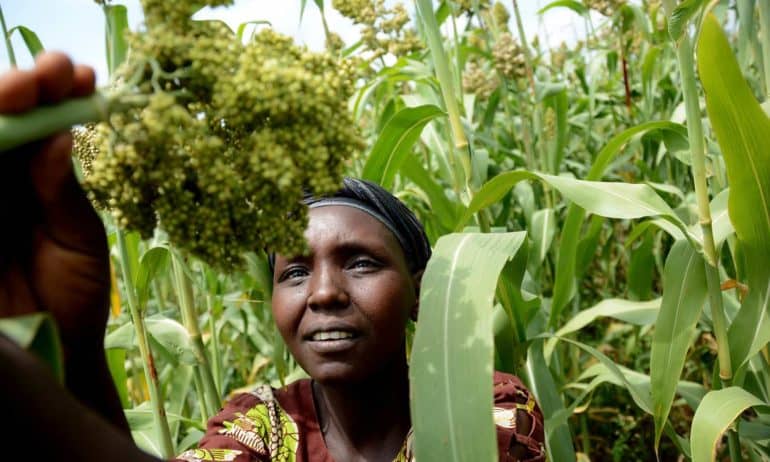Big Data is an evolving term that refers to the collection and analysis of large volumes of data to identify patterns and trends, then make predictions about future outcomes. In agriculture, Big Data is not only the quantity of data—it is also an algorithm of interaction with many variables applied to research like agronomy, breeding, farming systems modeling, strategic foresight, nutrition, health, and socio-economy.
“What we mean by Big Data is the linked data,” says Dr. Jawoo Koo, a Spatial Data and Analytics theme leader and senior research fellow for the International Food Policy Research Institute (IFPRI). “For us, Big Data is data from multiple disciplines that links together to give us a better understanding of how agriculture works.” Koo is co-pioneer of the CGIAR Platform for Big Data in Agriculture and Global Coordinator for the CGIAR Consortium for Spatial Information with extensive work experience in data analysis and crop modeling.
As Koo suggests, Big Data doesn’t just indicate quantity of information, but breadth. The aim isn’t how much data individual organizations can produce, but how much a collective group can understand based upon the sharing of knowledge. A key principle of the Platform for Big Data is that the data is F.A.I.R.: findable, accessible, interoperable, and reusable. “That’s our ultimate goal: all of the data that we develop are F.A.I.R.,” Koo tells Food Tank. “Researchers can benefit from multiple sources and multiple disciplines to truly understand why certain strategies are best for farmers and the environment.”
In this way, the CGIAR Platform for Big Data in Agriculture represents a kind of scientific democratization. “Everyone can access the data and all the data is open and public. You can do whatever you want with it.” Koo places emphasis on gradual change because creating a data democracy in agriculture means taking many individual and organizational interests into consideration. The Platform has major implications when it comes to science and research culture.
“Sharing research output beyond publication is really not in researchers’ DNA yet,” says Koo. The practice of open access and open data is jarring in an environment where there are few incentives for researchers to share their data with one another. “It is really difficult getting the well-created, well-documented, well-annotated, quality dataset out there for other people to use,” says Koo, “especially when we are working with researchers who, for their entire lifetime, have mostly been conducting research by themselves.”
Better communication between research institutions also opens the door to better communication with the public and greater impact where it counts. “Once we enable open access to peer researchers, that should unlock a secondary audience who can benefit from the research output,” says Koo. “Our partners in developing countries need better information on how to prioritize their investment and answer questions that are difficult unless you have enough supportive data.”
One IFPRI program that could become more impactful with the Platform’s approach is the Gender, Climate Change and Agriculture Integration Initiative (GCAN). GCAN is interdisciplinary by nature, studying the links between climate science, agricultural production, gender, and nutrition. As reflected in its conceptual framework, GCAN’s work draws on research from several disciplines to identify correlations, synergies, and trade-offs associated with climate change, agriculture activity, and nutrition in developing countries with a specific focus on gender relations. “By looking across the different dimensions,” says Koo, “We learn a lot about how best we can empower female farmers and female-led households toward a better livelihood.”
Farmers in India could also reap the benefits of Big Data. Picture-Based Crop Insurance (PBI) is another IFPRI-led project designed to help smallholder farmers in developing countries. Using smartphone pictures submitted by farmers, insurers can investigate claims and appraise crop losses more efficiently. “There are many technological innovations enabling this technology: how to take the picture in the most reliable way and how to translate that into information for the insurance policy,” says Koo. Increased access to relative data linked from other sources could help improve PBI and bring financial security to remote regions previously out of reach.
Collective improvement is what defines Koo’s Big Data. “CGIAR designed the Platform to strengthen its agricultural research system with data science,” says Koo. “And this will also benefit our partners.” Though Big Data in Agriculture is complex and will continue to evolve, its purpose is clear: to share existing knowledge and create new knowledge for greater impact on the global food system.











